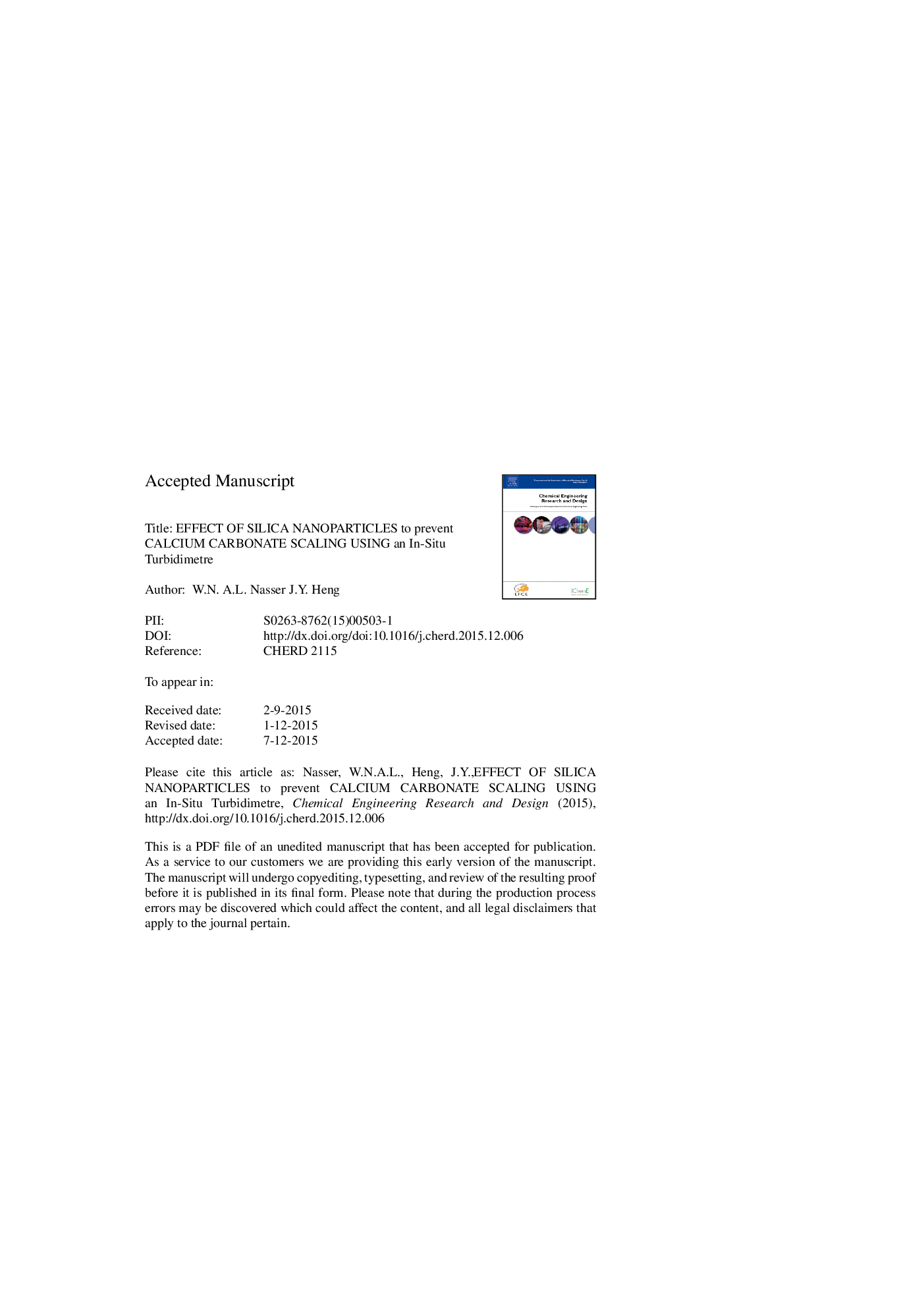| Article ID | Journal | Published Year | Pages | File Type |
|---|---|---|---|---|
| 7006569 | Chemical Engineering Research and Design | 2016 | 26 Pages |
Abstract
The purpose of this study was to investigate the possibilities of utilizing nanoparticles as sacrificial surface for enhancement and control of the nucleation and crystallization of CaCO3, as a method for fouling mitigation. Here, the turbidity profile of the solution, using a light reflection technique, is used to monitor the process. The outcomes of this study will improve revenues by preventing the unscheduled shutdown of facilities and avoidance of using an excess of scale inhibitors. Silica nanoparticles of different size and surface functional groups were added to the solution. The results showed a reduction in the induction period, consequently indicating improved control over crystallization. Modified silica nanotemplates exhibited the highest reduction in induction time at room temperature. This resulted in preventing scale formation on the wall of the crystallizer. This conclusion is very significant, and further studies are proposed, which will attempt to understand the mechanisms of reactions between the nanoparticles and scaling ions.
Related Topics
Physical Sciences and Engineering
Chemical Engineering
Filtration and Separation
Authors
W.N. Al Nasser, U.V. Shah, K. Nikiforou, P. Petrou, J.Y.Y. Heng,
